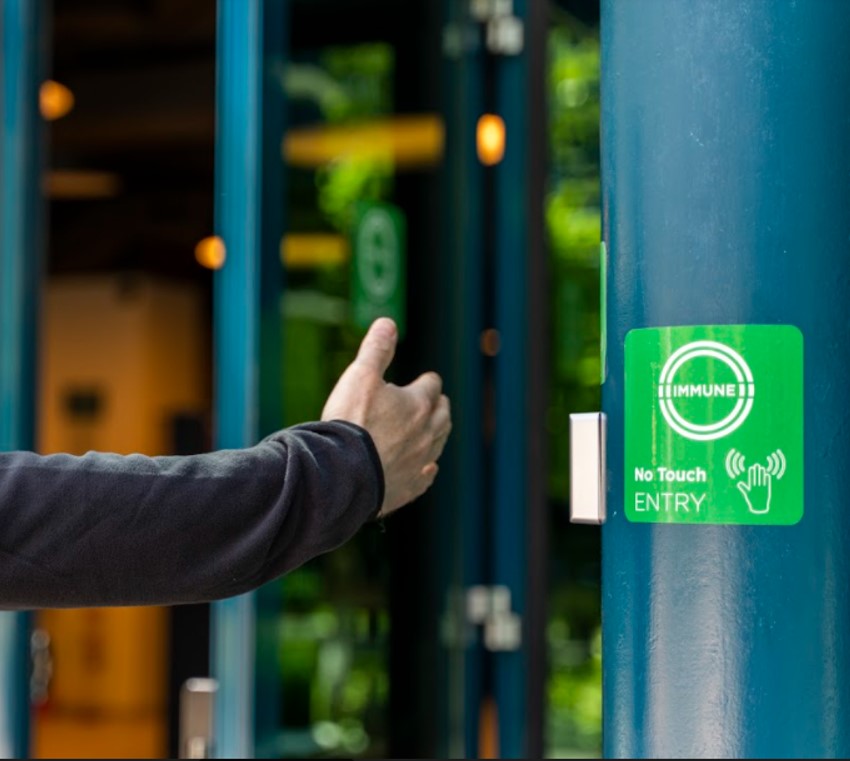Real Estate
Making Offices Hygienic - How Pandemic Affects Business

Some financial sector firms want staff back in the office, some are moving to a hybrid model and in the case of PwC recently, allowing all staff in certain roles to work remotely. Regardless, there's a need for offices to be more resilient against pandemics.
With one of the world’s largest private businesses, PwC, reportedly allowing all its
40,000 US client services staff to work virtually in perpetuity,
the move is another reminder of how disruptive COVID-19
is.
But the responses are mixed: Wall Street powerhouse Goldman Sachs stated
in May that it wants staff back in the office. On the other hand,
in July Royal Bank of Canada’s chief executive, Dave McKay, said
hybrid working as a model will stay in future.
Whatever eventual picture emerges, the pandemic has put a premium
on making offices and shared spaces as hygienic as possible.
Consequently, architecture and design needs to adapt.
Making buildings safer is important given that office working is
still a big feature of business life, Liviu Tudor, the president
of the European
Property Federation in Brussels, told this news service
recently.
“We spend 90 per cent of our time inside buildings. In the same
way that people are trying to reinforce their immune system…we
have to do this for buildings. We have to decide how we’re going
to handle this kind of threat again,” Tudor said. “If we learn
only one thing, it is to learn that buildings should be prepared
for future pandemics or other threats and that means we need to
build healthy buildings. I think that this is even more important
than 'green’ buildings.”
Predicting how long the working-from-home/hybrid working model
will last is difficult, he said, but Tudor took a guess: “Hybrid
working will stay for a while….maybe for two or three years after
the pandemic.”
Tudor is unconvinced that for many people, working from home is
the right course. “Many people like working from home but that is
not the way to be productive. The real power of a corporation is
a team being together and working together,” he said.
Given his role, Tudor has a stake in buildings that can bring
people together. He has been advising those owning, managing,
occupying or designing workplaces worldwide on how to re-open
their offices safely through his IMMUNE Building Standard™. This
is an open-source standard, developed in response to the
pandemic, showing how to re-engineer and redesign business
premises. The standard has been used for offices across the UK
and continental Europe, including in Bucharest, Romania, at
Building H3 in the West Gate Business District, fully occupied by
Ericsson. The business district belongs to Tudor’s company
Genesis Property whose other tenants include HP, Siemens,
Ericsson, Infineon, Société General and Accenture.
That there is pressure to move back to more standard office life
cannot be denied. JP Morgan told all US employees earlier this
year to prepare to return to the office; Citigroup said it
expected up to 30 per cent of US workers to return to the office
over the summer from July. It also said that more than 1,250
staff had already been working in its London offices throughout
May. Deutsche Bank told its 1,500 US investment bank employees
that they needed to return to the office by September.
Figures in the buildings and architecture field say that making
facilities healthier is as key as preparing for other disasters.
Kevin Van Den Wymelenberg, director of the Institute for Health
in the Built Environment, was quoted by NPR last
September as saying: "We've designed buildings for 100-year
floods. Now we have to learn to design for the 100-year flu."
This news service examined how the remote working trend
affects wealth management. As often noted, the crisis has
accelerated changes already under way. Two-way video meetings are
now the norm. Paperwork is out, digital files are in. The
pandemic has been tough on younger employees starved of
mentorship and office camaraderie. Appraising staff and handling
career goals is becoming more difficult.